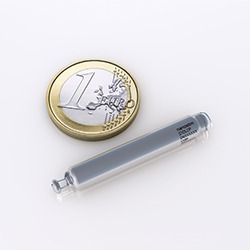
CE mark approval has been secured for the magnetic resonance (MR) conditional labelling for 1.5T scans for the Nanostim leadless pacemaker (St Jude Medical). This means that both existing and new Nanostim patients will be able to safely undergo full-body MRI diagnostic scans.
“Providing my patients access to a highly advanced pacemaker that can undergo an MRI scan is a notable step forward in treatment options,” says Johannes Sperzel, head of the electrophysiology department at the Kerckhoff Klinik, Bad Nauheim, Germany.
Tom Wong, cardiologist and electrophysiologist at Royal Brompton Hospital, London, UK, adds, “It is important that my patients in need of pacemakers also have the freedom to undergo MRI diagnostic scans for other conditions, if needed. This new labelling provides that flexibility and will be of great benefit to patients to ensure peace of mind for the future.”
The Nanostim leadless pacemaker is less than 10% of the size of a conventional pacemaker, and is designed to be implanted directly in the heart without the need for a surgical pocket or lead. The elimination of the visible lump and scar at a conventional pacemaker’s implant site, in addition to the removal of patient activity restrictions that may prevent the dislodgement or damage to a conventional lead, could potentially improve the quality of life for patients with by allowing most to continue living active, uninhibited lifestyles, according to a company release.
Implanted via the femoral vein with the smallest available leadless technology delivery system, the Nanostim leadless pacemaker is designed to offer a less-invasive approach for physicians compared to traditional pacemaker procedures that require more invasive surgery. The device is designed to be fully retrievable so that it can be readily repositioned throughout the implant procedure and later retrieved if necessary.












